In the circuit shown in E, F, G, and H are cells of emf 2,1,3 and 1 V, respectively. The resistances 2Ω,1Ω,3Ωand1Ω are their respectivle internal resistances.
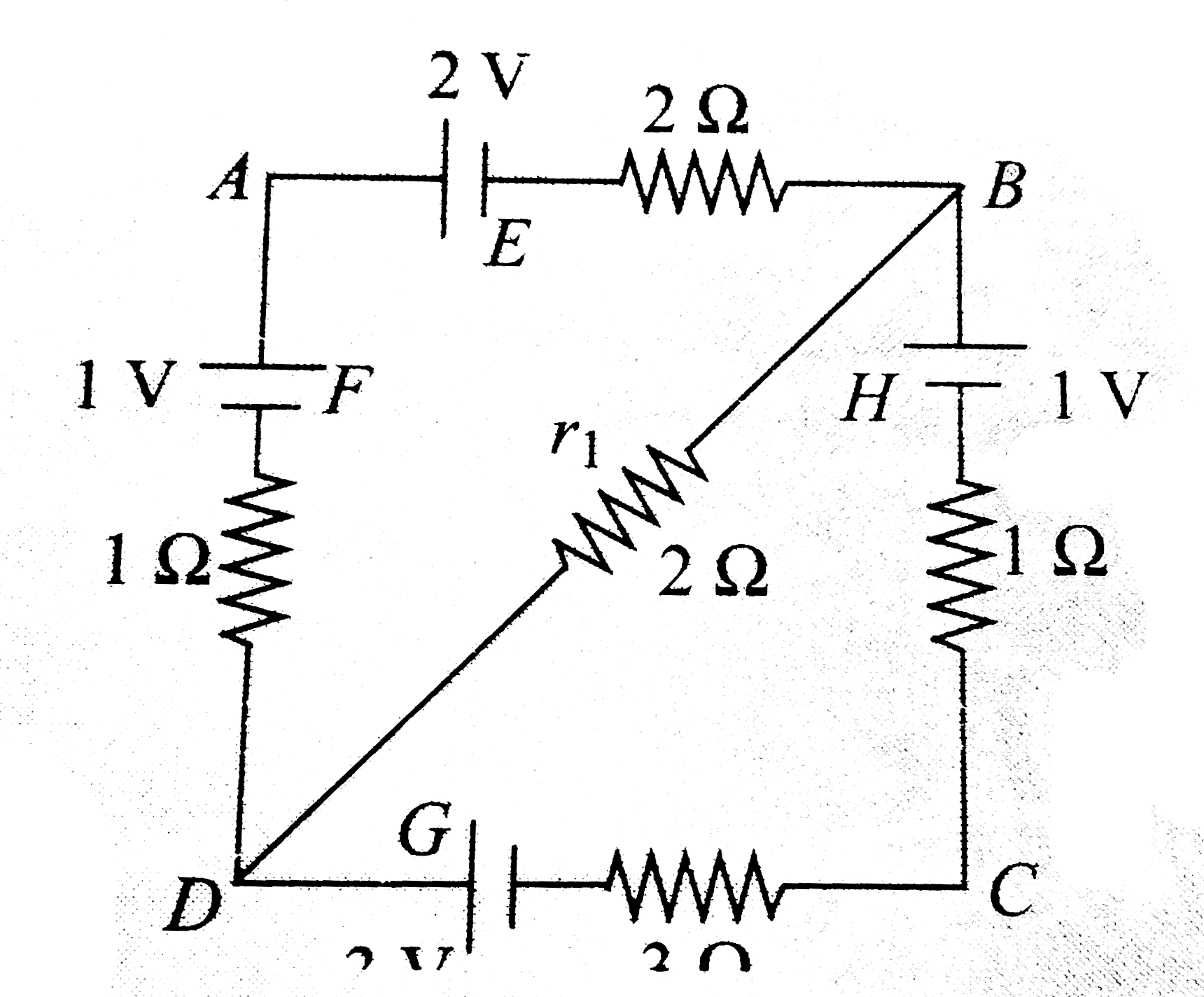
i. Find the potential difference between B and D.
(ii) Calculate the potential differences across the terminals of each of the cells G and H.
The circuit with the currents shown is redrawn in Applying the loop law to BADB, we get

−2i1+2−1−1i1−2(i1−i2)=0 or −5i1+2i2=−1(i)
Applying the same law to loop DCBD, we get
−3−3i2−3i2+1+(i1−i2)=0 or 2i1−6i2=2(ii)
From Eqs. (i) and (ii) we get
i1=112A,i2=−413A
∴i1−i2=513A
i. VD−VB=(2Ω)(513)A=1013V
ii. Potential differences across the cell G is
VD−VC=3+3i2=3+3(−4/13)=2713V
Potential difference across the cell H is
VB−VC=1−i2=1+4/13=17/13V.
⟨.V=E+ir)
Topper's Solved these Questions
- ELECTRIC CURRENT AND CIRCUITBOOK - CENGAGE PHYSICSCHAPTER - ELECTRIC CURRENT AND CIRCUITEXERCISE - Solved Examples
12 Videos
- ELECTRIC CURRENT AND CIRCUITBOOK - CENGAGE PHYSICSCHAPTER - ELECTRIC CURRENT AND CIRCUITEXERCISE - Exercise 5.1
28 Videos
- ELECTRIC CURRENT & CIRCUITSBOOK - CENGAGE PHYSICSCHAPTER - ELECTRIC CURRENT & CIRCUITSEXERCISE - Kirchhoff s law and simple circuits
15 Videos
- ELECTRIC FLUX AND GAUSS LAWBOOK - CENGAGE PHYSICSCHAPTER - ELECTRIC FLUX AND GAUSS LAWEXERCISE - MCQ s
38 Videos
Similar Questions
In the circuit shown in figure-3.159 cells E,F,G and H are of EMF 2V, 1V,3V and 1V respevitly and their internal resitance are 2Ω,1Ω,3Ω and 1Ω respectively Calculate
(a) The potential difference between points B and D
(d) The potential difference across the terminals of the cell G and H.
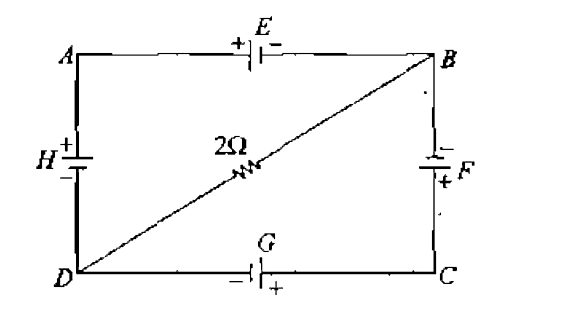
View Solution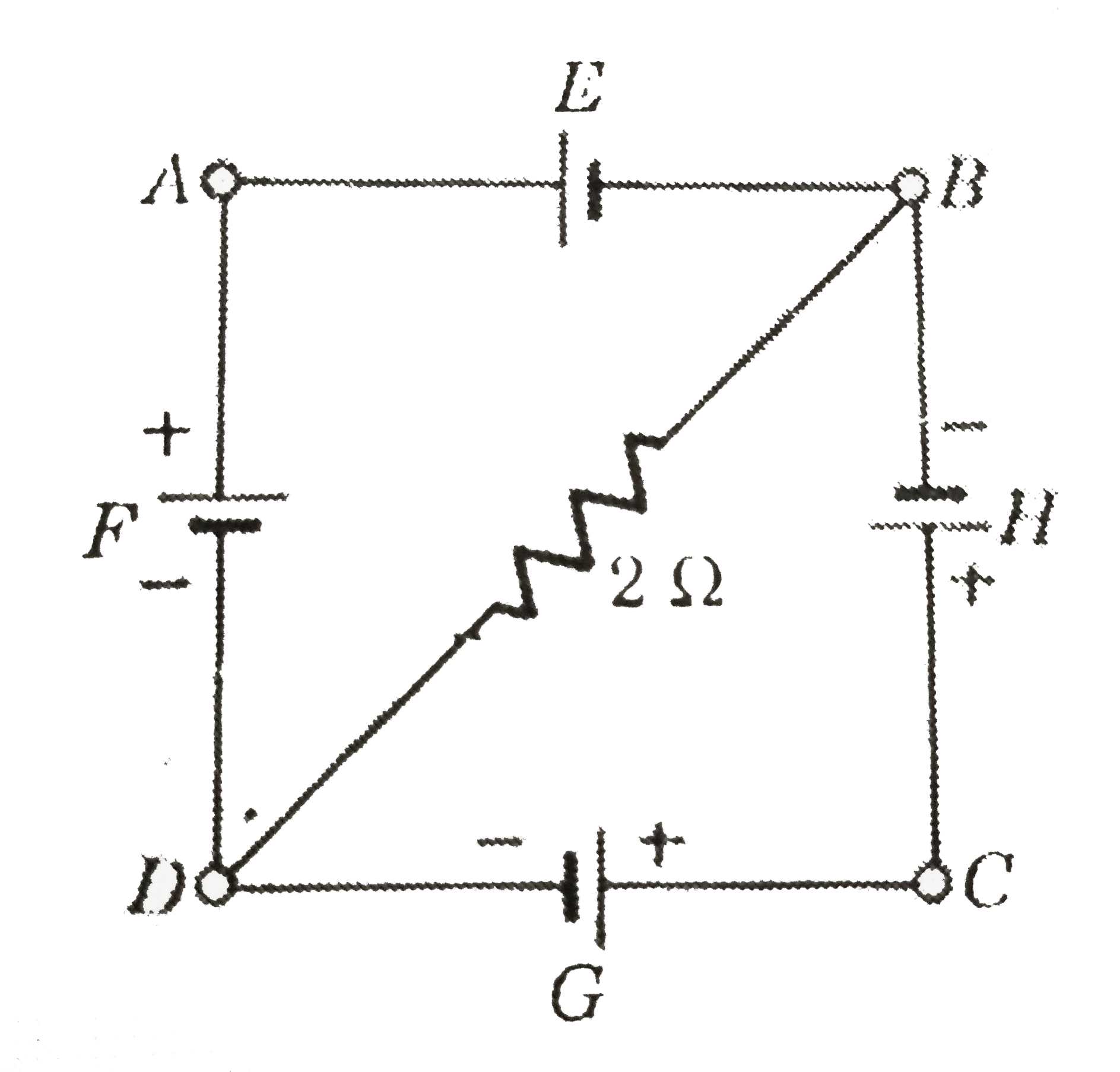
In the circuit shown in figure. The cells E,F,G and H have e.m.f's 2,1,3 and 1 V and internal resistance 2,1,3 and 1Ω respectively. Find the potential differences between points B and D, and across the terminals of the cells G and H.

View Solution
Knowledge Check
In the circuit shown in figure E,F, G and H are cell of emf 2,1,3, and 1V respectively. The resistances 2,1,3 and 1(Omega)are their respective internal resistance .Calculate (a)the potential difference between B and D and (b) the potential differences across the terminals of each of each of the cells G and H.
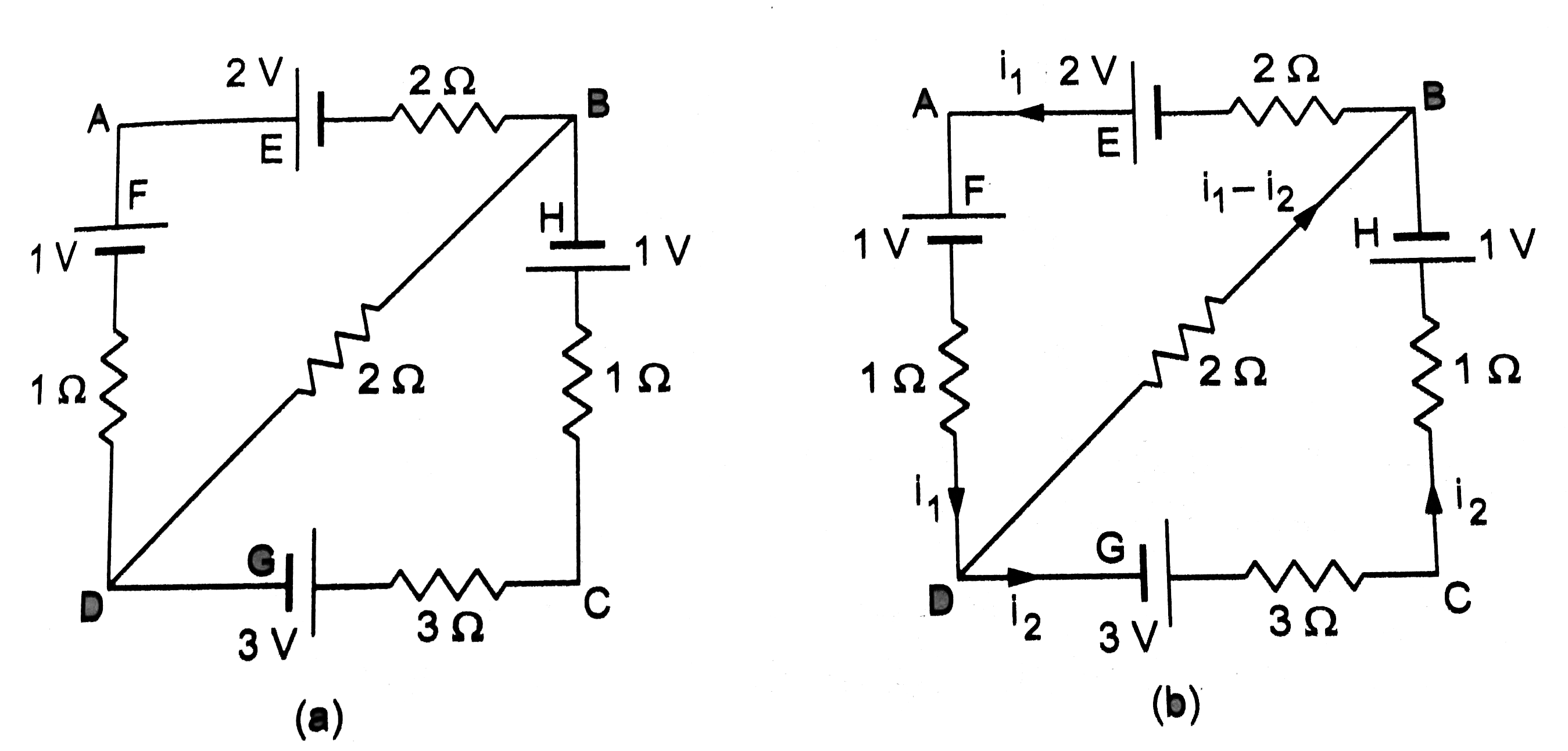 A2112V.B213V.C2114V.D2113V.
A2112V.B213V.C2114V.D2113V.In the circuit shown E,F,G and H are cells of emf 2V,1V,3V and 1V respectively and their internal resistance are 2Ω,1Ω,3Ω and 1Ω respectively.
 AVD−VB=−2/13VBVD−VB=2/13VCVG=21/13V=potential difference across GDVH=19/13V=potential difference across H
AVD−VB=−2/13VBVD−VB=2/13VCVG=21/13V=potential difference across GDVH=19/13V=potential difference across HIn the circuit E,F,G,Hare cell of emf 2,1,3and 1Ω respectively .The potential difference across the terminal of each of the cell G and H are
 A1.46V,1.61VB1.61V,1.46VC2.52V,1.61VD1.61V,2.25V
A1.46V,1.61VB1.61V,1.46VC2.52V,1.61VD1.61V,2.25V
Two non-ideal batteries have e.m.f 2V and 8V respectively and internal resistance 1 Omega and 2 Omega respectively as shown in the figure. If the potential difference between a and b is zero then the resistance R has a value
_PHY_E01_014_Q01.png)
View SolutionIn the shown circuit the following battery is of emf 4V and internal resistance 8Ω. Find the potential difference between points x and y as shown in the circuit.

View Solution
Four resistances 40Ω,60Ω,90Ω and 100Ω make the arms of a quadrilateral ABCD. Across AC is a battery of emf 40 V and internal resistance negligible. The potential difference across BD in V is ________.
View SolutionThe internal resistances of two cells shown are 0.1Ω and 0.3Ω. If R=0.2Ω, its potential difference across the cell
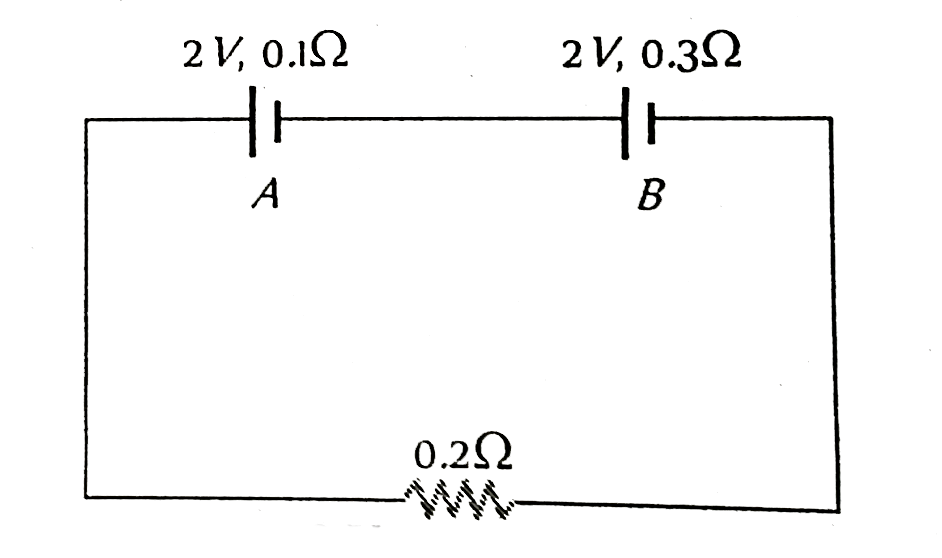
View SolutionA cell has emf of 2.2 V, when connected to a resistance of 5Ω, the potential difference between the terminals of the cell becomes 2.1 V, the internal resistance for the cell is
View Solution
